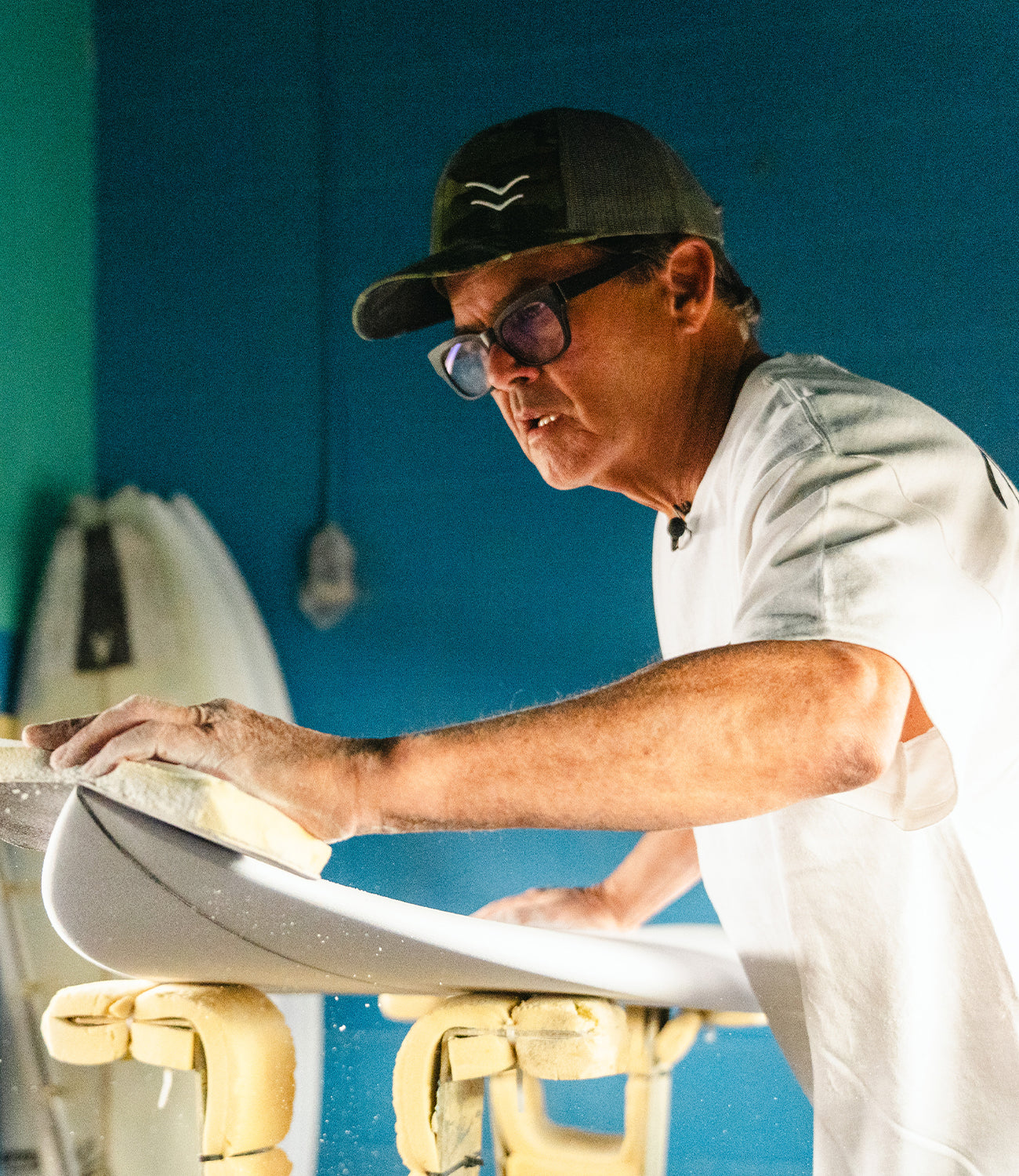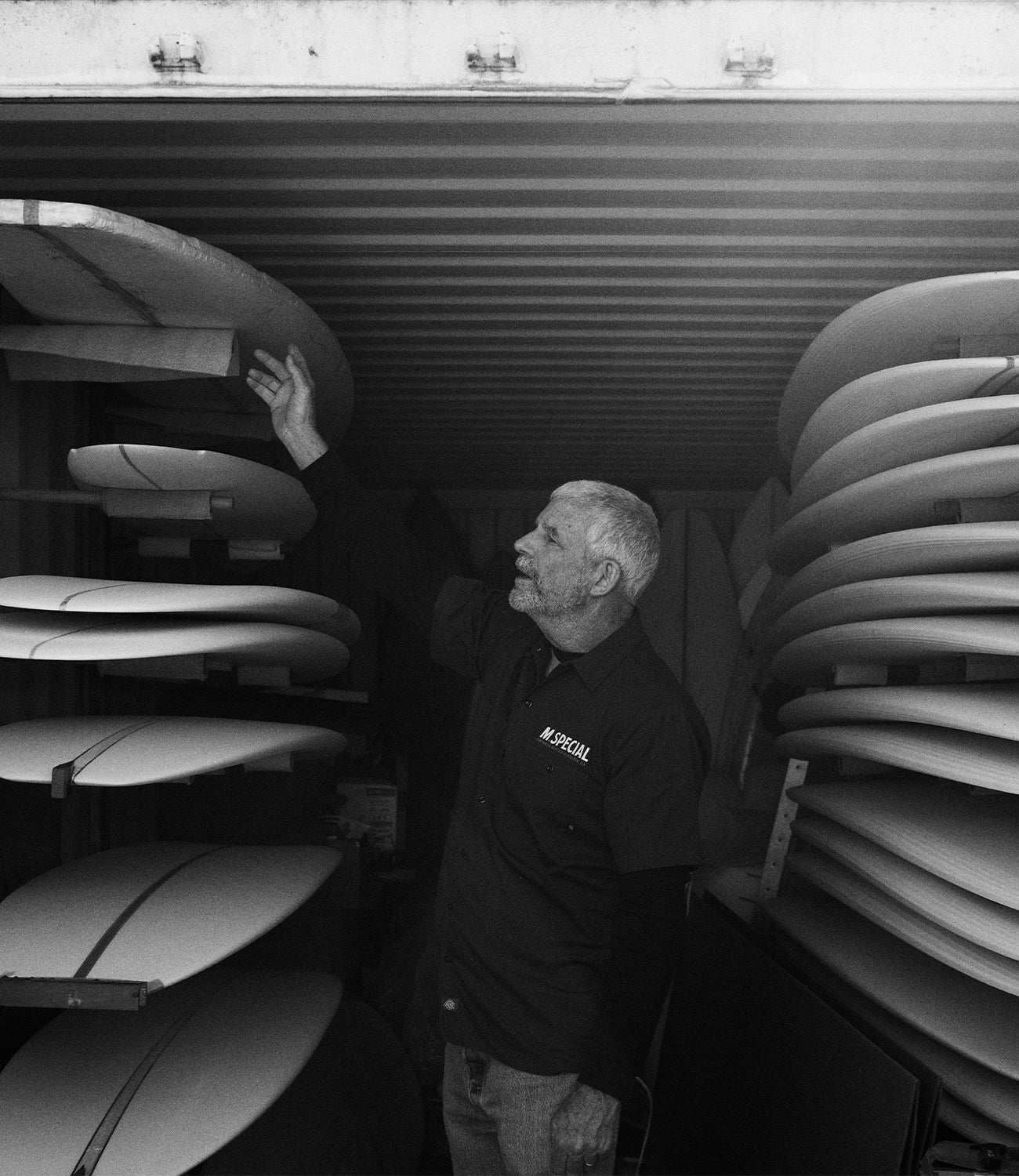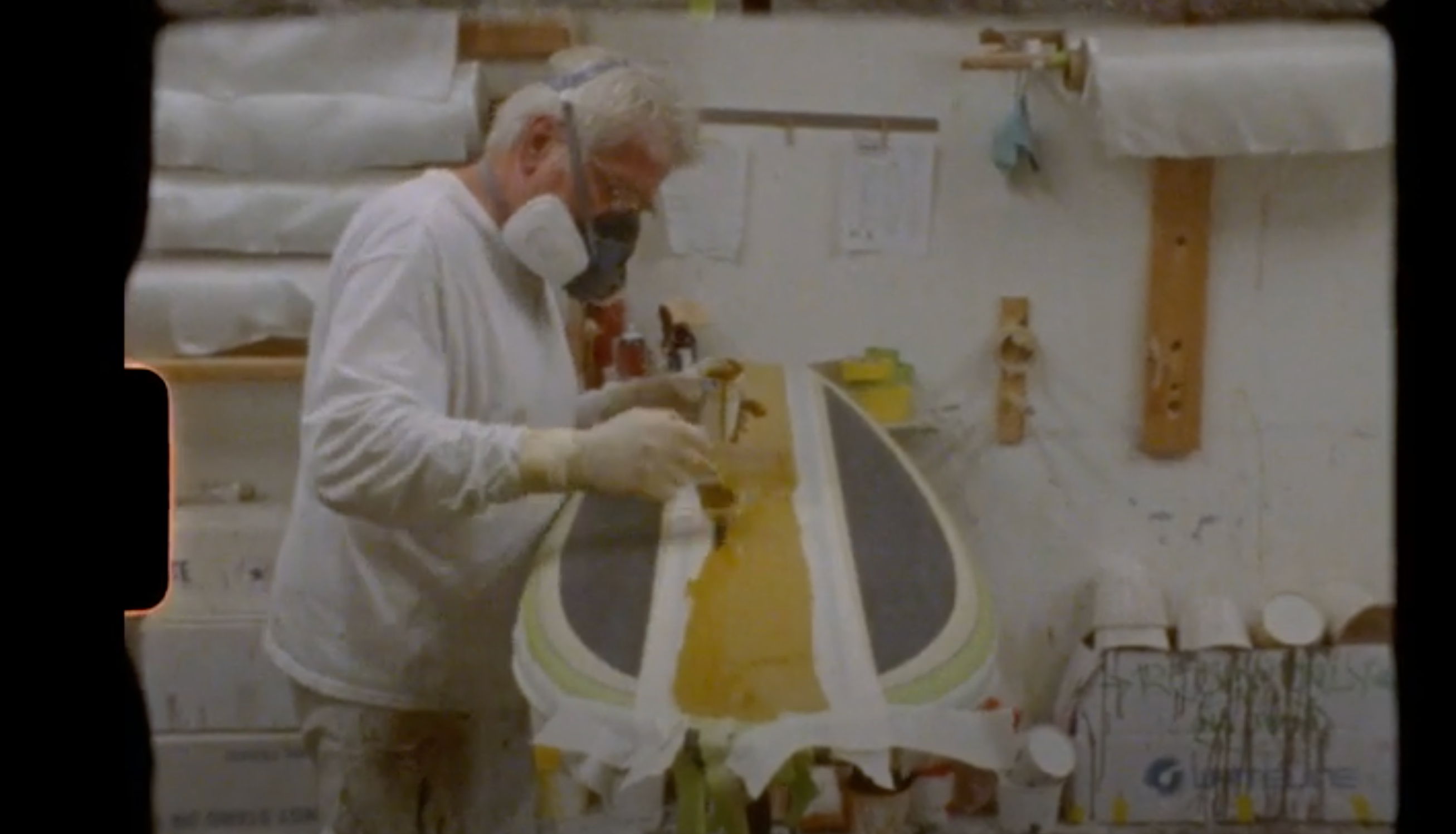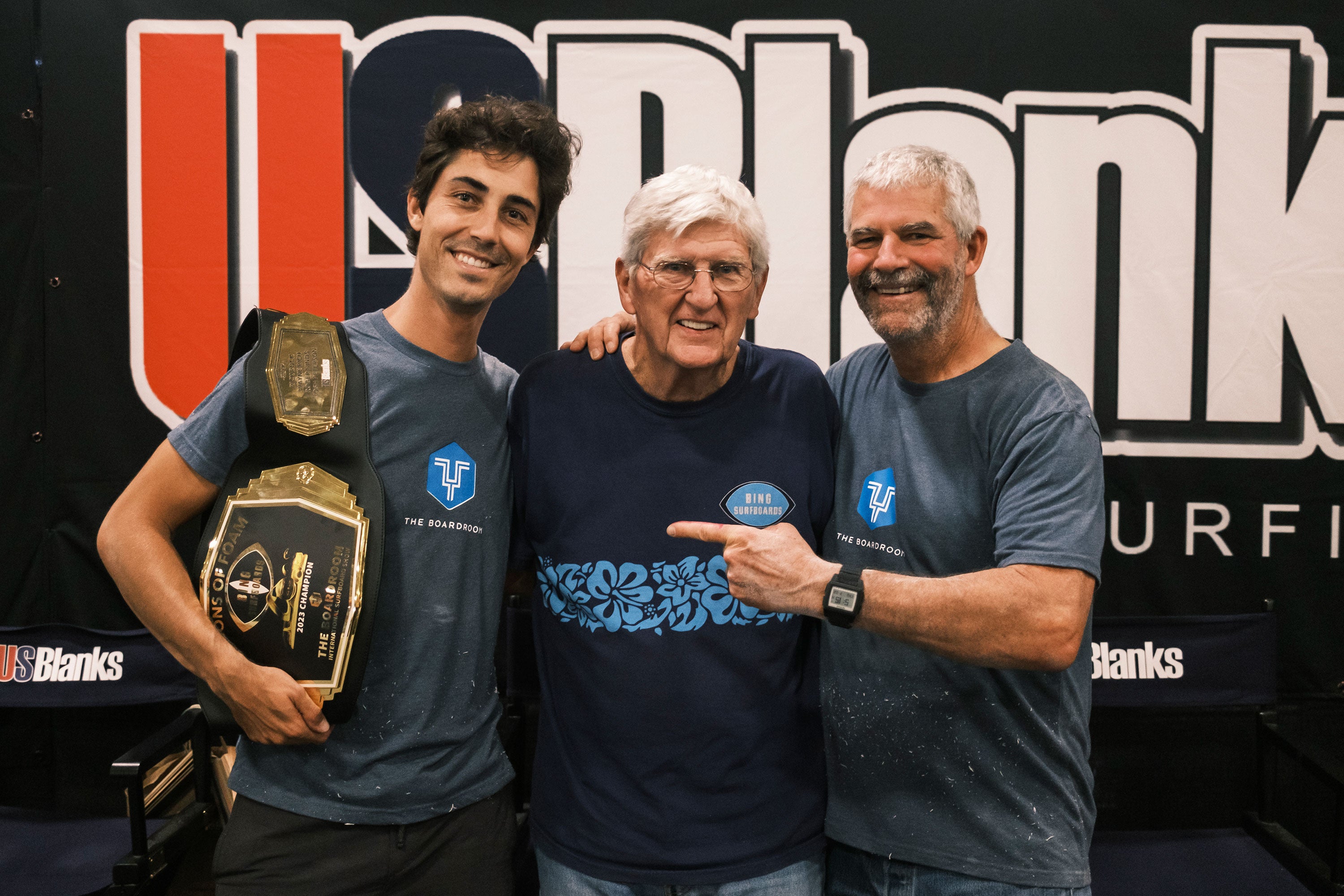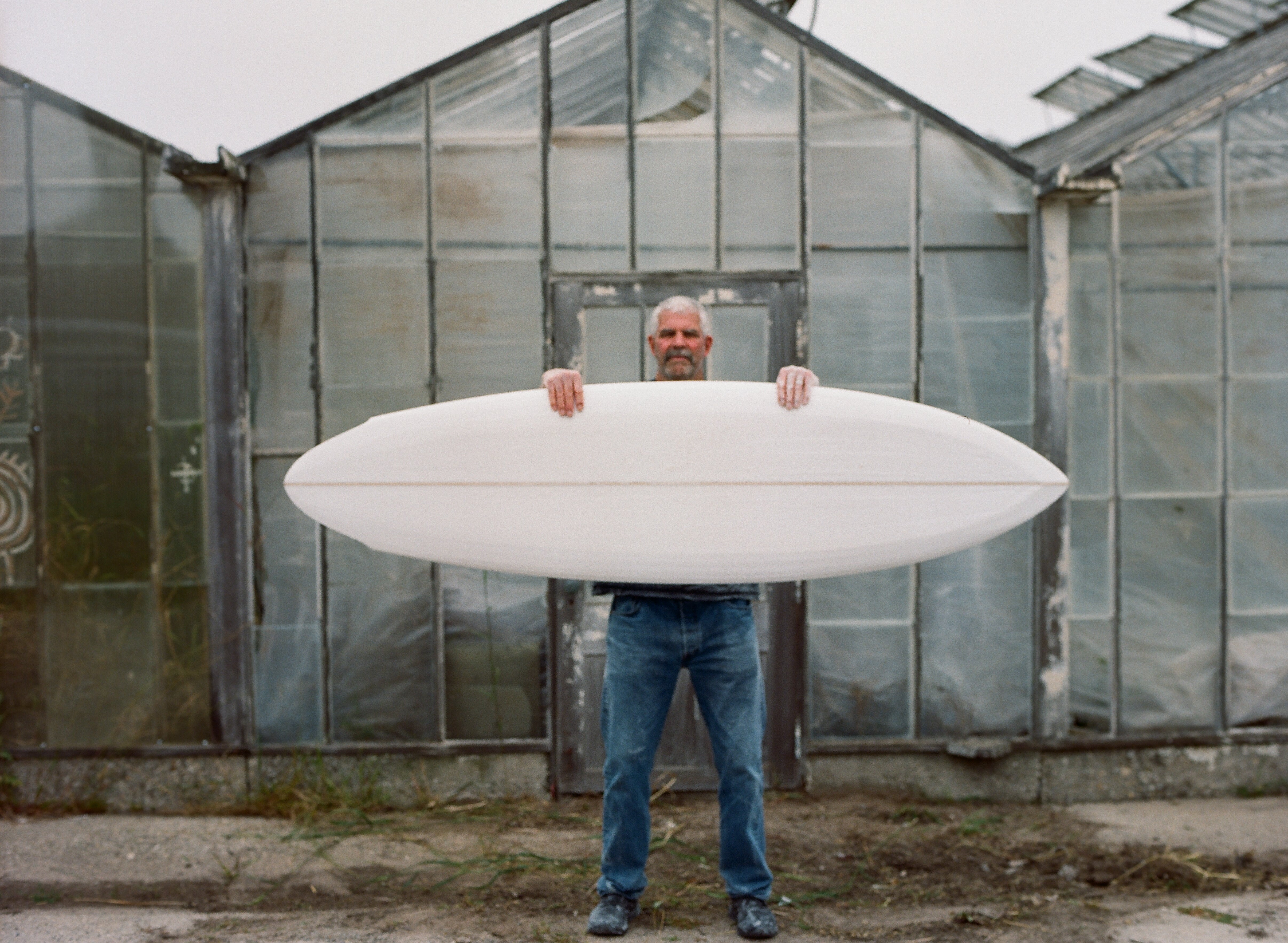When I found out that the “Best In Show” competition this year was the Bonzer I knew I had to contribute to the event. The opportunity to pay homage to Malcom and Duncan and the 50-year anniversary of their proven design was just too good to pass up. Thinking back, those early shots of the Campbell brothers and Russ Short surfing their Bonzers in Oxnard had no less impact on me than Simon’s introduction of the Thruster. Now, fifty years later, these designs are as valid as ever, and still surfed extensively by some of the world’s best surfers. For my entry I chose to build a replica of a 1973 Bonzer. My choice was influenced by the Bonzers the Campbell brothers produced with Bing Copeland and his crew of craftsmen at the Bing Surfboards factory in Hermosa Beach. The Bing Bonzers were the first ones I was exposed to and had a tremendous impact on me. One thing I learned from the surfboard builders in the 70’s that has stayed with me my entire career is the attention to detail in all phases of construction, a characteristic I’ve tried to emulate as my shaping and glassing skills have evolved. If you examine this board closely you will see what I mean by attention to detail in every step of construction. Of course, the shape is ultimately the most important, I was able to utilize the US Blanks 610 RH which I designed and created as my starting point. Stand back and consider the overall outline before you eye the rocker and rails, finalizing on the business end of the board, the tail and concaves of the Bonzer design. For the lamination I chose to go with Black opaque pigment. True to the era, laminators know that Black pigment is the most difficult of all to execute well and magnifies any error, hence my choice. Key to all Bonzers are the fins and the fin setup. These fins I made out of 3400-year-old sequoia wood, the same wood I used for the ultimate craftsman project at the Boardroom show a few years ago, note the bead on the trailing fin. And I do need to give a nod and a special thanks to Larry Allison, who took some of the same wood and built me the center fin for this board. All 70’s boards, or at least 90% of them, were pinlined and glossed for the ultimate showroom appeal which this board reflects. The Bing crew and the Campbell brothers Bonzers featured signature pinlines similar to what you see here, they were easily recognizable from a distance on the beach. Finally, the polished pinlines jump off the Black matte finish of the deck of the board. The only thing this board lacks from being a Bonzer in the 1973 Bing showroom is the Bing logo… and hopefully Malcom, Duncan and Bing will consider it deserving. -- Roger Hinds


